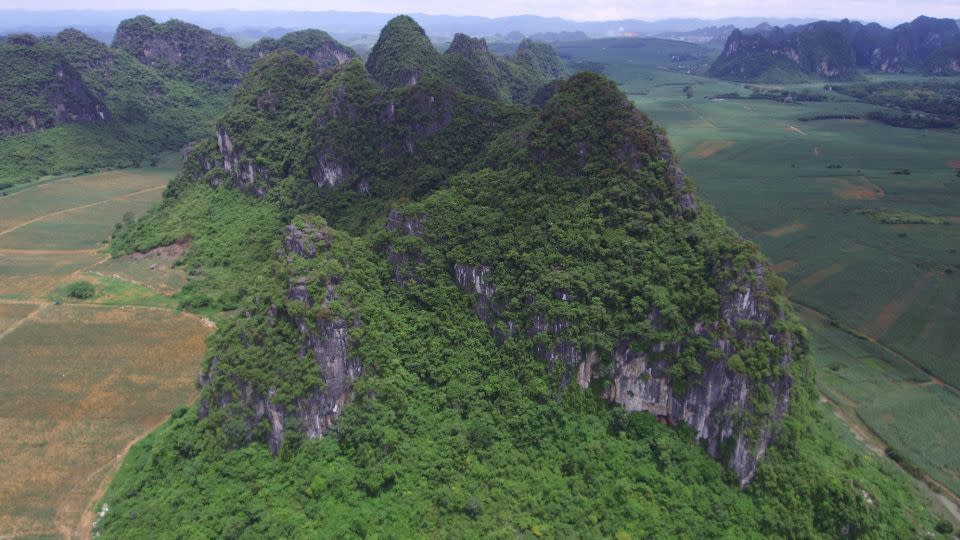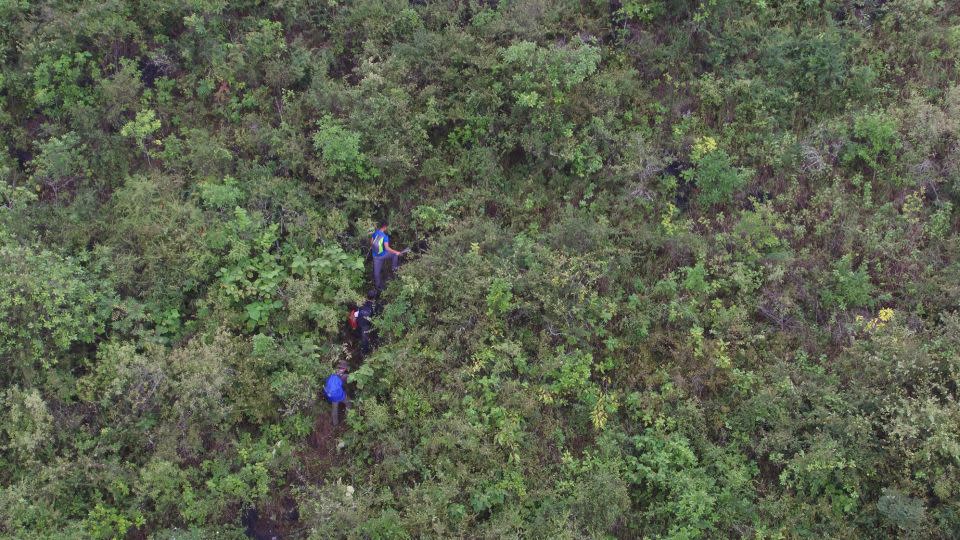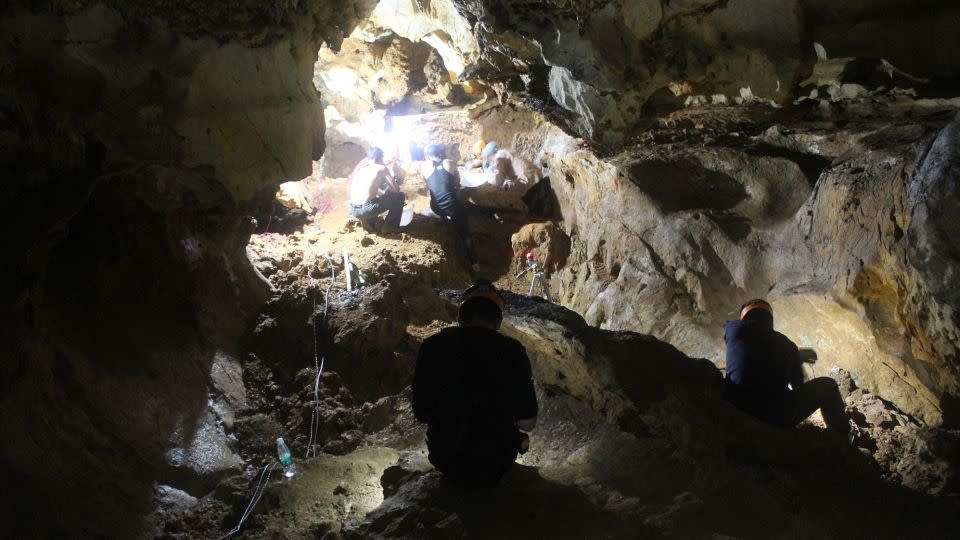Sign up for CNN’s Wonder Theory science newsletter. Explore the universe with news about fascinating discoveries, scientific developments and more.
The largest monkey ever was almost three meters tall and weighed almost twice as much as a gorilla. Why and when the legendary behemoth – which has captivated the popular imagination as “the real King Kong” – disappeared is one of the greatest mysteries in paleontology.
German-Dutch paleontologist GHR von Koenigswald first identified Gigantopithecus blacki about a century ago from large teeth sold in a Hong Kong pharmacy as medicinal “dragon bones.” About 2,000 fossilized teeth and four jawbones from the extinct species have since been unearthed from caves in southern China.
Now, new research into many of these rare fossils and the caves where they were found builds on preliminary evidence, revealing a timeline that sheds more light on the elusive circumstances surrounding Gigantopithecus’ demise.
“I think the child in us wants to know more about these amazing creatures and what happened to them,” said Renaud Joannes-Boyau, co-author of the study published Wednesday in the journal Nature. Joannes-Boyau is a professor at the Faculty of Science and Technology at Southern Cross University in Australia.

The authors believe the enormous creature went extinct between 295,000 and 215,000 years ago, after the climate became more seasonal and the herbivorous primate struggled to adapt to changing vegetation.
Before Gigantopithecus populations declined due to climate change, the species thrived in a rich and diverse forest environment from about 2 million years ago, eating mainly fruit, said co-author Kira Westaway, a professor and geochronologist at Macquarie University in Australia.
“About (700,000 or) 600,000 years ago we start to see major changes in the environment and during that period we see a decline in the availability of fruit,” she explains.
“Giganto (ate) less nutritious emergency food. We have evidence by looking at the structure of the teeth,” Westaway added. “Dimples and scratches on the teeth indicate that it ate very fibrous foods, such as bark and twigs from the forest floor.”


Detailed timeline
Over the course of nearly a decade, the team of Chinese and Australian scientists took sediment samples from 22 caves across a wide area of southern China’s Guangxi region, bordering Vietnam. Half of the caves contained fossils of Gigantopithecus, the other half did not.
First, the researchers obtained accurate data for the fossils and sediment using various techniques. Luminescence dating revealed when sediment was last exposed to sunlight and deposited in a cave, and U-series dating revealed when uranium was incorporated into bone specimens after the animal died. This analysis helped the team piece together a detailed timeline of the species’ existence.
“The early caves at 2 million years old have hundreds of teeth, but the younger caves around the extinction period – there are only 3-4… teeth,” Westaway said.
The team then analyzed pollen traces in the sediment samples to understand which plants and trees dominated the landscape. Isotopic analysis of elements such as carbon and oxygen in the Gigantopithecus teeth helped the researchers understand how the animal’s diet may have changed over time.
The team found that the giant ape did not adapt well to changing environmental conditions and exhibited chronic stress and declining numbers, Westaway said.
“We have a much more robust timeline for their life and when they became extinct – rather than being based on evidence from one or two caves, we sampled 22 caves over a wide area and used six dating techniques to ensure that the timeline is correct. accurate,” she said.


Questions remain
No Gigantopithecus fossils from the neck down have ever been found and documented. Considering that Gigantopithecus roamed parts of Asia for about two million years, Westaway said this was surprising.
According to the authors, the giant apes never lived in caves. It is thought that rodents carried their remains inside them, often through small rock crevices in the region’s distinctive rocky karst terrain, said co-author Wang Wei, a professor at the Institute of Cultural Heritage of Shandong University in Qingdao, China.
“The teeth or mandibles of great apes (based on the fossil evidence found) went through an extremely complex process of death, decomposition, weathering, transport and deposition before becoming embedded in the sediments of caves,” he explained via email.
“As a result, only a very small number of the hardest parts of Gigantopithecus’ body would have become fossils over the course of geological history.”
Given the lack of non-cranial fossils, it is difficult to know exactly what Gigantopithecus would have looked like. The upper molars are 57.8% larger than those of a gorilla and the lower molars are 33% larger, suggesting that its body weight would have been 200 to 300 kilograms.
The monkey’s gigantic size indicates that it most likely lived on the ground and walked on its fists. A November 2019 analysis of proteins found in a Gigantopithecus fossil suggested that its closest living relative is the Bornean orangutan.
Homo erectus, an early human ancestor, is known to have lived in northern China and further south in Indonesia, while at the same time the giant ape lived in the forests of what is now southern China.
Wang noted that archaeologists in the Bose Basin, near a cave where Gigantopithecus fossils were found, have discovered a large number of stone tools dating back to about 800,000 years ago. Although scientists have no direct fossil evidence that H. erectus and the giant ape coexisted in the region, it was possible that these human ancestors had an encounter “with the big man,” he said.
For more CNN news and newsletters, create an account at CNN.com